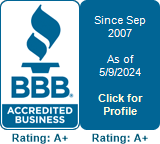What Is Double-Entry Bookkeeping? Should You Use It?

As a small business owner, you undoubtedly have heard of bookkeeping and your accounting books. But in order to enjoy the best success at controlling your money, you will do well to understand the basics of how your books are kept. And the best place to begin is to learn just a little about double-entry bookkeeping.
How does double-entry accounting work, and why does it help your business? Here are a few answers.
What Is Double-Entry Accounting?
Double-entry accounting (or bookkeeping) is the process of recording each financial transaction with two concurrent entries in the books. The entries generally increase one type of account while they decrease another account. This way, the books are always balanced, as each entry in the set matches the other.
Consider an example where you purchase an inventory item for $1,000. With double-entry accounting, you would record a $1,000 decrease in cash and a $1,000 increase in the value of your inventory. Everything remains balanced. You can see at a glance that you have less cash on hand but an equal increase in inventory.
Why Use Double-Entry Accounting?
The smallest of businesses usually start out with single-entry accounting, where each transaction is recorded roughly the way that a traditional checkbook register is kept. The transaction occurs once - when cash is actually exchanged - and either adds to or subtracts from a single account balance.
However, single-entry accounting becomes unwieldy as businesses grow and have different types of transactions that affect different parts of the business. For instance, when you buy a piece of manufacturing equipment, you might write a check for a down payment and make further payments monthly. The machine is also valuable, so it adds to the worth of your business.
In this case, a single purchase affects current cash, future monthly obligations, overall company assets, and production costs. How can you account for all these affected areas? This is where double-entry accounting comes in. With this method, you record the decrease in cash, the increase in company assets, new monthly obligations (along with the decreasing loan balance), and the increase in the cost to produce your goods.
This increase in complexity is one important part of why all public companies are required to use double-entry bookkeeping. So if you plan to take your business to the next level, you will eventually have to make this move as well.
How Does Double-Entry Help You?
Because it balances your accounting numbers, double-entry bookkeeping ensures more accuracy. The amount of assets must equal your liabilities and the amount of equity (owners' capital) currently built up. When you pay a bill, your assets (cash) go down but so do your liabilities (accounts payable). As a result, you can much more easily know that your books are in balance and everything is entered correctly.
Double-entry accounting also helps a business create useful financial statements. Lenders, vendors, customers, and owners can always see how money flows through your organization. This system produces simple statements like the Profit and Loss Statement and Balance Sheet. The balance sheet distills all your transactions into an easy-to-read format that groups assets, liabilities, and equity into one balanced equation.
Where Should You Start?
Is your business growing beyond single-entry bookkeeping? Have you had trouble ensuring accurate books? Do you want to learn more about the benefits of double-entry accounting for your particular enterprise? Start by consulting with an experienced bookkeeping service in your area.
Quality Bookkeeping Services Inc. can help. Our bookkeepers and accounting professionals will work with you to create the right accounts and teach your staff how to use double-entry books. Call today to make an appointment.












